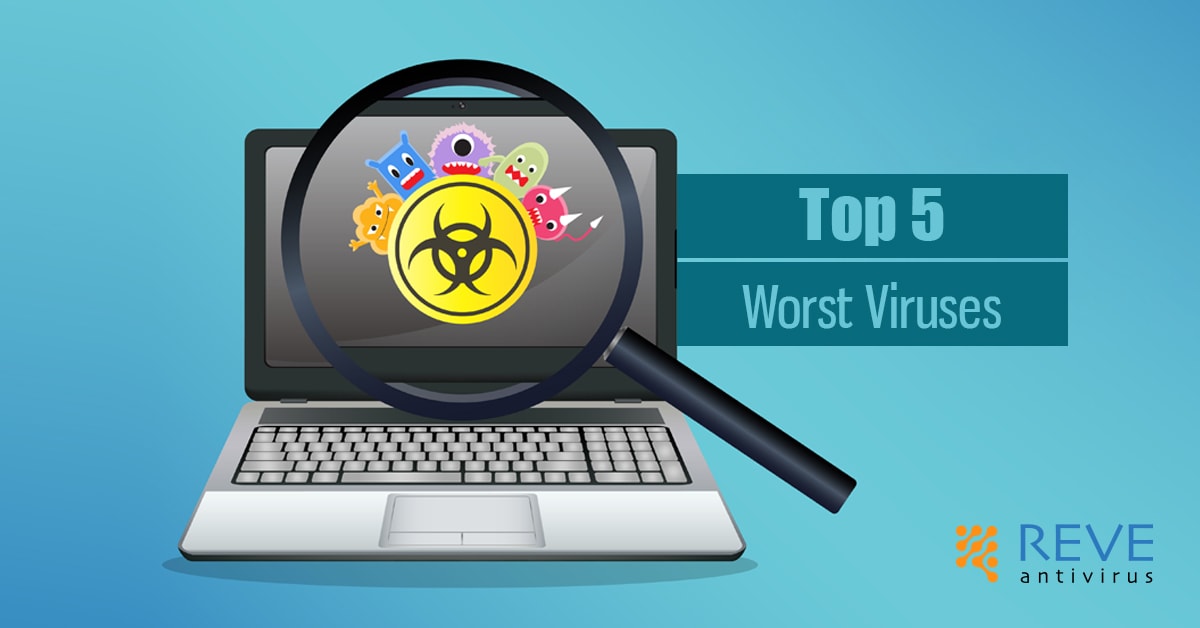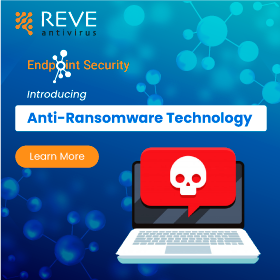
Virus are primarily believed to be codes that are designed to harm and spread worldwide. They are created by hackers to attack computers and steal your personal data to make money. There are different viruses that affects Windows, Linux, Mac computers, whereas some can go far enough to impact on the data services that keeps the internet running and the companies that are using them. There have been more than 50,000 computer viruses and the number is still increasing over the years, each one more complex than the other. These viruses spread online and have caused millions of dollars loss of productivity as well as resources.
Different viruses can only do varied tasks at a time, like spreading quickly and/or getting hold of your private info or causing damage worth a lot of money. Most of these viruses are quite opposed to the other, so to pick out the worst is not feasible.
However, the present-day viruses are more futuristic and are quite advanced from the ones in the past. Hacking and cyber-threats have evolved with time making your computer more vulnerable, so internet security is more important than ever. Let’s go through some of the malicious computer viruses and what course of action can be used to prevent yourself from hackers.
-
Botnets-
The word ‘Botnet’ is an abbreviation of the two words, ‘robot’ and ‘network’. This virus is controlled by hackers to steal personal data, attack your web browser and email by getting access to your computer and internet connection. It activates Distributed Denial of Service (DDOS) attacks on company websites which disrupts from processing any authorized customer demands making the site browser preoccupied. Sometimes these websites are collapsed to the core and can be restored only by paying a ransom. The controller of the botnet uses Command and Control (C&C) software to manage the virus remotely and spread it wide via payload, malicious mail or web browsing.
It is tough to detect botnet attacks as the programmers use low profile in the initial stage to dodge identification before striking at a large range. It can be best avoided by installing effective antivirus software to prevent your PC from changing into a botnet zombie. Keeping your operating system up to date is a good plan but the chances of getting infected by botnet is always a possibility through web services. It is essential to take a collaborative approach with artificial intelligence and other software retailers to detect threats, resolve them and avert them using highest quality.
-
Phishing-
This procedure is commonly used for online identity theft, stealing financial details. The Phishing is designed as emails that are sent from imposter pretending to be renowned and trusted organizations or impersonated personal contacts. Once the mail is opened, it convinces people to enter their password or other sensitive data including bank account specifics or credit card number, which is then directed towards the malicious source. The main objective here is to breach into your personal as well as monetary info and gain benefit.
To oppose this attack, you must be cautious about opening emails, clicking links or downloading files. If it’s a mail from reliable source or your bank, sink in the details of what they are asking for before disclosing any private information. Sometimes the URL are different from the text in the mail. If you are still uncertain about it, call the company directly to clarify the doubts. Mainly, change your password regularly so that your accounts are not easy to access by hackers.
-
DDoS (Distributed Denial of Service)-
A DDoS is somewhat a traffic congestion which prevents regular vehicles from reaching their proper destinations. This attack causes to compromise multiple computer systems to target a server or network and to create a flood of Internet traffic that generates a denial of service for the targeted audience. This attack requires a network of online computers or machines which are infected by malware and controlled from distance. It becomes difficult to crash the interlinking as the internet device handled are legitimate. It’s very disastrous form of cyber-attack for companies that sell their products and services online as they are affected most by this vicious attack leading to loss worth millions. Here are some more facts on mem cached DDoS attack.
It is hard to recognize DDoS attacks as it is a built-in social engineering tool that hits your network affecting the services and browser. A Web Application Firewall is an exceptional tool as it gives you more control over your web traffic by recognizing, filtering and blocking malicious web virus. Since it’s a large-scale interlinking with the internet, taking assistance from your service provider is inevitable. As for your website, try to take some precautionary measures before including it in your cloud services.
-
Ransomware-
As the name itself indicates, this malicious software is mostly used to encrypt your data and block the users until a sum of money is paid. By the invention of crypto-currency Bitcoin, a huge growth in ransomware was stimulated by the attacker who gives a set of instructions to the victim to pay the amount without which they won’t be able to restore their data. The attackers mostly target hospitals, prominent universities, law firms, government agencies and other organizations as they tend to have deficient cyber security system making it easier to infiltrate their data.
To safeguard your data and other information, the same strategies should be employed. A valid antivirus software that needs to be updated frequently. Another additional method is by keeping a backup of your important data on different locations, so the impact doesn’t need you to pay the ransom at all.
-
APT (Advanced Persistent Threat)-
An APT is a hidden computer attack where an invader or a group establishes an illegal and long-term residence on a network and remains unexposed. The targets are mostly massive corporations or government federations from which the attackers collect confidential data and destroy them, patent thefts, financial snitch, full control over site. APT is more complex than other viruses, they perform manually from one location, penetrating through connected networks and compromising all forms of data.
Since this attack is tough to identify, you can look for unusual patterns in your web activities, accessed control by outside source. You should often strengthen your network software by IT experts, coding of remote connections, filtering incoming emails, using application-specific white lists to be limited users.
CONCLUSION
The viruses these days are extremely complicated to intercept, so to keep your data intact you must be well-aware about them. It can attack you from any facet, in that case, you must take all the precautionary measures discussed above. You can also coordinate with your employees by training them to recognize these malware. Furthermore, try to avoid the free wireless internet connection that are easy to access as it can be another means by hackers to get into your network. Virus is like a cancer, spreading and dismantling everything. Even if you fall prey to one of the attacks, you can take help of skillful professionals.
- RaaS : The Dark Side of SaaS
- Hackers Target MOVEit Transfer’s Zero-Day Vulnerability, Emergency Patch Deployed
- How Scammers Are Utilizing ChatGPT? Few Tips To Be Safe
- World Backup Day: Why Data Backups are Important in Cybersecurity
- What is Social Engineering and How Cyber Criminals Use It
- Things To Know About Personally Identifiable Information (PII)
- What is Data Breach? Why and How It occurs? How To Prevent Data Breach


